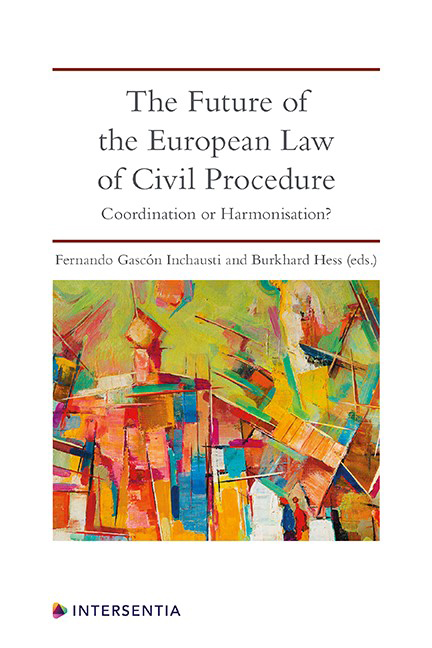Book contents
- Frontmatter
- Contents
- List of Cases
- List of Authors
- Introduction
- PART I METHODOLOGICAL APPROACHES
- PART II THE CURRENT SITUATION: VERTICAL AND HORIZONTAL HARMONISATION
- PART III CURRENT INITIATIVES FOR FURTHER HARMONISATION: The ELI/UNIDROIT Project
- The 2017 Directive Proposal on Common Minimum Standards of Civil Procedure
- Index
- ABOUT THE EDITORS
Introduction
Published online by Cambridge University Press: 23 July 2020
- Frontmatter
- Contents
- List of Cases
- List of Authors
- Introduction
- PART I METHODOLOGICAL APPROACHES
- PART II THE CURRENT SITUATION: VERTICAL AND HORIZONTAL HARMONISATION
- PART III CURRENT INITIATIVES FOR FURTHER HARMONISATION: The ELI/UNIDROIT Project
- The 2017 Directive Proposal on Common Minimum Standards of Civil Procedure
- Index
- ABOUT THE EDITORS
Summary
The harmonisation of civil proceedings within the European Union has become one of the trending topics among scholars of procedural law and private international law. The reasons for this interest are as numerous as they are obvious. It is unquestionable that the globalisation of legal relations – economic and personal – has increased cross-border litigation, forcing an interplay between different procedural systems, which has become necessary for many purposes: for example, when it comes to serving abroad the document instituting the proceedings; in order to obtain the cooperation of another Member State‘s court to gather evidence; to request a protective measure that must be immediately effective in another jurisdiction; or to promote the recognition and/or enforcement of a judgment in a Member State other than the one in which it was issued.
For decades now, the institutions of the European Union have been aware of this phenomenon and of the need to have rules that allow for the additional obstacles that this diversity entails to be effectively overcome, in order to ensure an adequate resolution of cross-border disputes. This is, indeed, one of the aims that legitimise the progressive construction of a European Area of Civil Justice, as proclaimed in Articles 67 and 81 TFEU.
However, there seems to be a paradigm shift in the manner of dealing with this issue. Initially, the European law-maker chose to face this matter from the perspective of international judicial cooperation, which in turn has been based for 20 years on the notions of mutual trust and mutual recognition. This approach was probably the only one possible, although it has placed the rules on civil procedure approved by the European Union in a kind of “no man‘s land“. It is not procedural law in a classical or traditional sense – at least, not in its entirety – since it is basically intended to coordinate the national procedural legislation of the Member States in cross-border scenarios, but not to regulate civil proceedings as such – except very tangential aspects, such as the exequatur procedure, where it subsists. Rather, it is EU law – based on the fundamental values of the European Union, such as access to justice, fair trial, equal treatment or the best interests of the child, among others – that performs this function.
- Type
- Chapter
- Information
- The Future of the European Law of Civil ProcedureCoordination or Harmonisation?, pp. 1 - 6Publisher: IntersentiaPrint publication year: 2020

